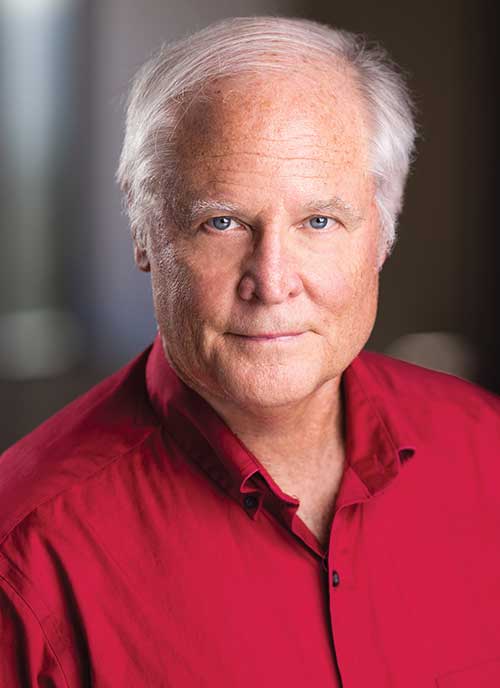Former rocket scientist brings special effects wizardry to television

When Special Agent Tony DiNozzo runs through a burning house in season 9 of the police drama NCIS, the intense flames, smoke, and debris—even the sweat glistening on his face—are courtesy of the show’s lead visual-effects artist and finish editor Robert Minshall ’74. But Minshall didn’t plan on spending four decades in television postproduction, inserting conflagrations, imaginary landscapes, and alien spaceships into scenes, when he earned his degree in materials science and engineering.
After MIT, Minshall moved to California for a job with NASA’s space shuttle program, working on metals-related production issues and running a large test program. “At that point, I could actually call myself a rocket scientist from MIT,” he says.
Two years later, however, he volunteered to be part of a layoff and pursued a career as an R&B guitarist. Music has been a lifelong love for Minshall, who picked up the guitar after seeing the Beatles on The Ed Sullivan Show as a boy and still plays piano or guitar for an hour every day. Although he found some early success working as a session and touring guitarist in Los Angeles, a few years of unsteady income prompted him to move on again.
It was around that time that Minshall took a small side job wiring a new video production facility. A series of similar positions with escalating responsibility led him by the early 1990s to work as a visual-effects editor. “Visual effects is a very nice combination of art and technology, so it suited me well,” he explains. The editing setup in the early days was so complex that Minshall recalls a client remarking, “You have to be a rocket scientist to do all this”—to which he was able to say, “You’re in luck!”
In 1993, Minshall was hired to work as visual-effects editor on a sci-fi series pilot. He recalls working all night on the first episode of The X-Files, and delivering it personally to the show’s creator, Chris Carter. His four-year stint on the show, which became a pop culture milestone, helped Minshall build his reputation and skills. His long list of credits includes Entourage, Deadwood, and Weeds.
Minshall creates his magic primarily with the special-effects software Flame. His MIT classes have also proved handy: for example, he recalls using the physics concept of damped motion to make the shaking of the ground under a monster’s feet look more realistic.
“There was no school for this when I was starting,” he says. “But visual effects is one large exercise in problem solving, something an MIT education emphasizes.”
Keep Reading
Most Popular
Large language models can do jaw-dropping things. But nobody knows exactly why.
And that's a problem. Figuring it out is one of the biggest scientific puzzles of our time and a crucial step towards controlling more powerful future models.
The problem with plug-in hybrids? Their drivers.
Plug-in hybrids are often sold as a transition to EVs, but new data from Europe shows we’re still underestimating the emissions they produce.
Google DeepMind’s new generative model makes Super Mario–like games from scratch
Genie learns how to control games by watching hours and hours of video. It could help train next-gen robots too.
How scientists traced a mysterious covid case back to six toilets
When wastewater surveillance turns into a hunt for a single infected individual, the ethics get tricky.
Stay connected
Get the latest updates from
MIT Technology Review
Discover special offers, top stories, upcoming events, and more.